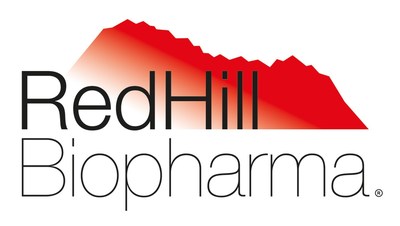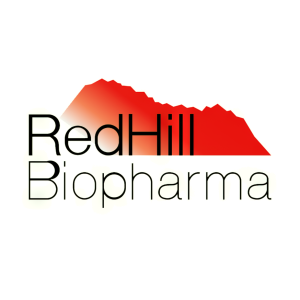RedHill Presents New Talicia® and Movantik® Data Analyses at ACG 2022
Rhea-AI Summary
RedHill Biopharma (Nasdaq: RDHL) presented new data analyses for its products Talicia and Movantik at the ACG Annual Meeting on October 21-26, 2022. A PBPK modeling study revealed that Talicia, a leading H. pylori treatment, provides superior intragastric antibiotic exposure with a dosing regimen of 50 mg rifabutin every 8 hours compared to standard rifabutin therapies. Movantik, the top oral PAMORA for opioid-induced constipation, demonstrated significant improvements in patient quality of life and symptom control in pooled analyses of phase 3 studies. RedHill emphasizes Talicia's efficacy in addressing antibiotic resistance issues.
Positive
- Talicia showed favorable intragastric rifabutin concentrations, enhancing H. pylori eradication rates (84-90%) compared to generic regimens (70%).
- Movantik demonstrated clinically meaningful improvements in quality of life and symptoms in opioid-induced constipation patients (40-70% more likely vs. placebo).
- Talicia is the only low-dose rifabutin-based therapy addressing high antibiotic resistance, with eight years of U.S. market exclusivity and patent protection until 2034.
Negative
- None.
Insights
Analyzing...
Physiologically-Based Pharmacokinetic (PBPK) modeling study of Talicia evaluated intragastric antibiotic exposure, critical for successful H. pylori eradication, comparing low-dose rifabutin 50 mg every 8 hours to generic rifabutin triple therapy 150mg twice a day or 300 mg once a day.
Talicia, the leading prescribed branded H. pylori therapy by U.S. gastroenterologists, is intended for empiric first-line eradication of H. pylori, a bacterial infection that affects approximately
Pooled analyses of Movantik phase 3 studies in opioid-induced constipation assess impact on patient quality of life and symptom improvement
Movantik is the most prescribed oral PAMORA prescribed by U.S. pain specialists for opioid-induced constipation with over 3.2 million prescriptions written since 2015
RALEIGH, N.C. and TEL-AVIV, Israel, Oct. 26, 2022 /PRNewswire/ -- RedHill Biopharma Ltd. (Nasdaq: RDHL) ("RedHill" or the "Company"), a specialty biopharmaceutical company, announced the presentation of new data analyses for Talicia®, for the treatment of H. pylori, and Movantik®, for the treatment of opioid -induced constipation (OIC), at the American College of Gastroenterology Annual Meeting (ACG) October 21-26, 2022.

Sufficient intragastric antibiotic exposure is critical for eradication of H. pylori, consequently, understanding the influence of antibiotic dosing on intragastric exposure is imperative. This study used Physiologically-Based Pharmacokinetic (PBPK) modeling to compare intragastric rifabutin concentrations with Talicia (low-dose rifabutin 50 mg) administered every 8 hours (Q8H) vs. rifabutin 150 mg (the generically available dose) administered twice daily (BID) or 300 mg administered once daily (QD). This analysis indicates that Talicia provides favorable intragastric rifabutin concentration and as a result provides high potential for H. pylori eradication while minimizing systemic antibiotic exposure.
Poster title (poster number: A0683): Modeling Gastric Luminal Rifabutin Concentrations: RHB-105 (Rifabutin 50mg Q8H) Provides More Favorable Exposure for H. pylori Eradication Than Generic Rifabutin 150mg BID or 300mg QD
Presenting Author: Dr. Colin W. Howden, MD, Professor Emeritus, Chief of the Division of Gastroenterology, University of Tennessee Health Science Center.
This analysis builds upon previous work and demonstrates that two generically available rifabutin regimens (150 mg BID and 300 mg QD) did not maintain the intragastric rifabutin concentrations seen with Talicia, despite containing twice the total daily dose of rifabutin. This may help to explain the lower eradication rates seen with generic rifabutin triple therapy regimens (about
"These important new data enhance the body of evidence supporting the use of Talicia as a first line therapy for H. pylori," said Dr. June Almenoff, MD, Ph.D., RedHill's Chief Medical Officer. "This work demonstrates sustained intragastric exposure providing optimized conditions for eradication of H. pylori. Given the need to aim for the most effective empiric first-line eradication therapy, it is important to utilize a therapy with the highest likelihood of eradication success, such as Talicia."
The two Movantik posters are pooled analyses (n= 1337) of two phase 3 clinical studies (KODIAC-04 and -05) of Movantik in patients with OIC and assess the impact of Movantik on patient quality of life according to the validated patient assessment of constipation, quality of life questionnaire (PAC-QOL), and symptom improvement according to the patient assessment of constipation, symptoms questionnaire (PAC-SYM):
Poster title (poster number: A089): Naloxegol Provides Clinically Meaningful Healthcare Related Quality of Life (HR-QoL) Improvement (PAC-QOL) in Patients With Opioid-Induced Constipation (OIC): A Pooled Analysis of Two Global Phase 3 Studies of Naloxegol
Presenting Author: Dr. Darren M. Brenner, MD, Professor of Medicine and Surgery (Gastroenterology and Hepatology), Northwestern University, Feinberg School of Medicine.
This poster evaluated the efficacy of naloxegol in providing clinically meaningful HR-QOL improvement in patients with OIC. Data showed that Movantik demonstrated rapid and clinically meaningful constipation related quality of life improvement in the overall population (40
Poster title (poster number: A090): Naloxegol Provides Clinically Meaningful Symptom Improvement (PAC-SYM) in Patients With Opioid-Induced Constipation (OIC): A Pooled Analysis of Two Global Phase 3 Studies of Naloxegol
Presenting Author: Dr. Darren M. Brenner, MD, Professor of Medicine and Surgery (Gastroenterology and Hepatology), Northwestern University, Feinberg School of Medicine.
This second Movantik poster evaluated the efficacy of Movantik in providing clinically meaningful symptom improvement, based on the PAC-SYM patient reported outcome, in patients with OIC. Data showed that Movantik demonstrated rapid and clinically meaningful constipation related symptom improvement in the overall population (20
In both analyses Movantik was well tolerated and demonstrated a favorable safety profile.
About H. pylori infection H. pylori is a bacterial infection that affects approximately
About Talicia Talicia is a novel, fixed-dose, all-in-one oral capsule combination of two antibiotics (amoxicillin and rifabutin) and a proton pump inhibitor (PPI) (omeprazole), approved by the U.S. FDA for the treatment of H. pylori infection in adults.
Talicia is the only low-dose rifabutin-based therapy approved for the treatment of H. pylori infection and is designed to address H. pylori's high resistance to other antibiotics. The high rates of H. pylori resistance to clarithromycin have led to significant rates of treatment failure with clarithromycin-based therapies and are a strong public health concern, as highlighted by the ACG, FDA and the World Health Organization (WHO) in recent years.
In the pivotal Phase 3 study, Talicia demonstrated
Talicia is eligible for a total of eight years of U.S. market exclusivity under its Qualified Infectious Disease Product (QIDP) designation and is also covered by U.S. patents which extend patent protection until 2034 with additional patents and applications pending and granted in various territories worldwide.
TALICIA: IMPORTANT SAFETY INFORMATION
Tell your healthcare provider about all of the medicines you take, including prescription or non-prescription medications or herbal supplements before starting Talicia. Talicia may affect the way other medicines work, and other medicines may affect the way Talicia works. Do not start any new medications while taking Talicia without first speaking with your healthcare provider.
- You should not take Talicia if you are known to be sensitive to any of the components of Talicia (omeprazole, amoxicillin, rifabutin), penicillins, proton pump inhibitors or rifamycins.
- You should not take Talicia if you are taking rilpivirine-containing products, delavirdine or voriconazole.
Before you take Talicia, tell your healthcare provider about all of your medical conditions, including if you:
- Are pregnant or plan to become pregnant. Talicia may harm your unborn baby. Tell your healthcare provider if you become pregnant or think you may be pregnant during your treatment with Talicia.
- Have severe kidney disease or liver disease.
When taking Talicia, do not crush or chew capsules. Do not take Talicia with alcohol.
Call your healthcare provider immediately if while taking Talicia you develop:
- New rash or other skin changes, muscle or joint pains, swelling of any area of the body, severe flu-like symptoms, difficulty breathing, fever, blood in your urine, increased or decreased urination, drowsiness, confusion, nausea, vomiting, ongoing stomach pain, bloody diarrhea, or if diarrhea continues after therapy is completed, weight gain or changes in your eyesight.
What are the common side effects of Talicia?
- The most common side effects of Talicia are diarrhea, headache, nausea, stomach pain, rash, indigestion, mouth or throat pain, vomiting, and vaginal yeast infection. Call your healthcare professional for medical advice about side effects.
- Tell your healthcare provider if you experience tiredness, weakness, achiness, headaches, dizziness, depression, increased sensitivity to light, or pain when taking a deep breath.
- Talicia may reduce the effectiveness of oral or other forms of hormonal birth-control. You should use an additional non-hormonal highly effective method of birth control while taking Talicia.
- You may experience a brown-orange discoloration of your urine or tears while taking Talicia.
- The information here is not comprehensive. Talk to your healthcare provider to learn more.
APPROVED USE FOR TALICIA
TALICIA is a prescription medicine for the treatment of a bacteria, Helicobacter pylori (H. pylori), in the stomach of adults.
Click here for the full Prescribing Information for TALICIA.
You are encouraged to report Adverse Reactions to RedHill Biopharma Inc. at 1-833-ADRHILL (1-833-237-4455) or the FDA at 1-800-FDA-1088 or www.fda.gov/medwatch.
About opioid-induced constipation
Opioid-induced constipation (OIC) affects 40
About Movantik® (naloxegol)
Movantik® is an opioid antagonist indicated for the treatment of opioid-induced constipation (OIC) in adult patients with chronic non-cancer pain, including patients with chronic pain related to prior cancer or its treatment who do not require frequent (e.g., weekly) opioid dosage escalation.
MOVANTIK: IMPORTANT SAFETY INFORMATION
- MOVANTIK may cause serious side effects, including:
- Opioid withdrawal. You may have symptoms of opioid withdrawal during treatment with MOVANTIK, including sweating, chills, diarrhea, stomach pain, anxiety, irritability, and yawning. Patients taking methadone to treat their pain may be more likely to experience stomach pain and diarrhea. Tell your doctor if you have any of these symptoms
- Severe Stomach Pain and/or Diarrhea. This can happen within a few days of starting MOVANTIK and can lead to hospitalization. If either of these side effects occurs, stop taking MOVANTIK and call your doctor immediately
- Tear in your stomach or intestinal wall (perforation). Stomach pain that is severe can be a sign of a serious medical condition. If you get stomach pain that gets worse or does not go away, stop taking MOVANTIK and get emergency medical help right away - Do not take MOVANTIK if you:
- Have a bowel blockage (intestinal obstruction) or have a history of bowel blockage
- Are allergic to MOVANTIK or any of the ingredients in MOVANTIK - MOVANTIK can interact with other medicines and cause side effects, including opioid withdrawal symptoms (see symptoms above). Tell your doctor or pharmacist before you start or stop any medicines during treatment with MOVANTIK
- Before you take MOVANTIK, tell your doctor about all of your medical conditions, including if you:
- Have any stomach, bowel (intestines) problems, including inflammation in parts of the large intestine (diverticulitis), or inflammation and injury of the intestines caused by reduced blood flow (ischemic colitis)
- Have had recent surgery on the stomach or intestines
- Have any kidney, or liver problems
- Are pregnant or plan to become pregnant. Taking MOVANTIK during pregnancy may cause opioid withdrawal symptoms in you or your unborn baby. Tell your healthcare provider right away if you become pregnant during treatment with MOVANTIK
- Are breastfeeding or plan to breastfeed. It is not known if MOVANTIK passes into your breast milk. Taking MOVANTIK while you are breastfeeding may cause opioid withdrawal in your baby. You and your healthcare provider should decide if you will take MOVANTIK or breastfeed. You should not breastfeed if you take MOVANTIK - Tell your doctor about all of the medicines you take, including prescription and over-the-counter medicines, vitamins, and herbal supplements. Other medicines may affect the way MOVANTIK works
- If you stop taking your opioid pain medicine, stop taking MOVANTIK and tell your doctor
- Avoid eating grapefruit or drinking grapefruit juice during treatment with MOVANTIK
- The most common side effects of MOVANTIK include: Stomach (abdomen) pain, diarrhea, nausea, gas, vomiting, headache, and excessive sweating
APPROVED USE FOR MOVANTIK
MOVANTIK is a prescription medicine used to treat constipation that is caused by prescription pain medicines called opioids, in adults with long-lasting (chronic) pain that is not caused by active cancer.
Click here for the Medication Guide and full Prescribing Information for MOVANTIK.
You are encouraged to report Adverse Reactions to RedHill Biopharma Inc. at 1-833-ADRHILL (1-833-237-4455) or FDA at 1-800-FDA-1088 or www.fda.gov/medwatch.
RedHill Biopharma Inc. supports the responsible use of medications, including those containing opioids, as treatment options for patients with chronic non-cancer pain.
MOVANTIK is a registered trademark of the AstraZeneca group of companies.
About RedHill Biopharma
RedHill Biopharma Ltd. (Nasdaq: RDHL) is a specialty biopharmaceutical company primarily focused on gastrointestinal and infectious diseases. RedHill promotes the gastrointestinal drugs, Movantik® for opioid-induced constipation in adults[12], Talicia® for the treatment of Helicobacter pylori (H. pylori) infection in adults[13], and Aemcolo® for the treatment of travelers' diarrhea in adults[14]. RedHill's key clinical late-stage development programs include: (i) RHB-204, with an ongoing Phase 3 study for pulmonary nontuberculous mycobacteria (NTM) disease; (ii) opaganib (ABC294640), a first-in-class oral SK2 selective inhibitor targeting multiple indications with a Phase 2/3 program for hospitalized COVID-19 and Phase 2 studies for prostate cancer and cholangiocarcinoma ongoing; (iii) RHB-107 (upamostat), an oral serine protease inhibitor in a Phase 3-stage study as treatment for non-hospitalized symptomatic COVID-19, and targeting multiple other cancer and inflammatory gastrointestinal diseases; (iv) RHB-104, with positive results from a first Phase 3 study for Crohn's disease; and (v) RHB-102 , with positive results from a Phase 3 study for acute gastroenteritis and gastritis and positive results from a Phase 2 study for IBS-D. More information about the Company is available at www.redhillbio.com/ twitter.com/RedHillBio.
This press release contains "forward-looking statements" within the meaning of the Private Securities Litigation Reform Act of 1995. Such statements may be preceded by the words "intends," "may," "will," "plans," "expects," "anticipates," "projects," "predicts," "estimates," "aims," "believes," "hopes," "potential" or similar words. Forward-looking statements are based on certain assumptions and are subject to various known and unknown risks and uncertainties, many of which are beyond the Company's control and cannot be predicted or quantified, and consequently, actual results may differ materially from those expressed or implied by such forward-looking statements. Such risks and uncertainties, including without limitation the risk that the Company will not succeed to expand Talicia's reach to additional ex-U.S. territories; as well as other risk and uncertainties associated with (i) the initiation, timing, progress and results of the Company's research, manufacturing, pre-clinical studies, clinical trials, and other therapeutic candidate development efforts, and the timing of the commercial launch of its commercial products and ones it may acquire or develop in the future; (ii) the Company's ability to advance its therapeutic candidates into clinical trials or to successfully complete its pre-clinical studies or clinical trials; (iii) the extent and number and type of additional studies that the Company may be required to conduct and the Company's receipt of regulatory approvals for its therapeutic candidates, and the timing of other regulatory filings, approvals and feedback; (iv) the manufacturing, clinical development, commercialization, and market acceptance of the Company's therapeutic candidates and Talicia®; (v) the Company's ability to successfully commercialize and promote Talicia®, Aemcolo® and Movantik®; (vi) the Company's ability to establish and maintain corporate collaborations; (vii) the Company's ability to acquire products approved for marketing in the U.S. that achieve commercial success and build its own marketing and commercialization capabilities; (viii) the interpretation of the properties and characteristics of the Company's therapeutic candidates and the results obtained with its therapeutic candidates in research, pre-clinical studies or clinical trials; (ix) the implementation of the Company's business model, strategic plans for its business and therapeutic candidates; (x) the scope of protection the Company is able to establish and maintain for intellectual property rights covering its therapeutic candidates and its ability to operate its business without infringing the intellectual property rights of others; (xi) parties from whom the Company licenses its intellectual property defaulting in their obligations to the Company; (xii) estimates of the Company's expenses, future revenues, capital requirements and needs for additional financing; (xiii) the effect of patients suffering adverse experiences using investigative drugs under the Company's Expanded Access Program; and (xiv) competition from other companies and technologies within the Company's industry. More detailed information about the Company and the risk factors that may affect the realization of forward-looking statements is set forth in the Company's filings with the Securities and Exchange Commission (SEC), including the Company's Annual Report on Form 20-F filed with the SEC on March 17, 2022. All forward-looking statements included in this press release are made only as of the date of this press release. The Company assumes no obligation to update any written or oral forward-looking statement, whether as a result of new information, future events or otherwise unless required by law.
Company contact: Adi Frish Chief Corporate & Business Development Officer RedHill Biopharma +972-54-6543-112 |
Category: R&D
[1] Liu, X. et al. Rescue Therapy with a Proton Pump Inhibitor Plus Amoxicillin and Rifabutin for Helicobacter pylori Infection: A Systematic Review and Meta-Analysis. Gastroenterol Res Pract, 2015, 415648. https://doi.org/10.1155/2015/415648
Gingold-Belfer, R. et al. Rifabutin triple therapy for first-line and rescue treatment of Helicobacter pylori infection: A systematic review and meta-analysis. J Gastroenterol Hepatol, 36(6), 1392-1402. https://doi.org/10.1111/jgh.15294
Gisbert, J. P. Rifabutin for the Treatment of Helicobacter Pylori Infection: A Review. Pathogens, 10(1). https://doi.org/10.3390/pathogens10010015
[2] Graham, D. Y. et al. Rifabutin-Based Triple Therapy (RHB-105) for Helicobacter pylori Eradication: A Double-Blind, Randomized, Controlled Trial. Ann Intern Med, 172(12), 795-802. https://doi.org/10.7326/M19-3734
Kalfus, I. N. et al. Rifabutin-Containing Triple Therapy (RHB-105) for Eradication of Helicobacter pylori: Randomized ERADICATE Hp Trial. Antibiotics (Basel), 9(10). https://doi.org/10.3390/antibiotics9100685
[3] Hooi JKY et al. Global Prevalence of Helicobacter pylori Infection: Systematic Review and Meta-Analysis. Gastroenterology 2017; 153:420-429.
[4] IQVIA Custom Study for RedHill Biopharma, 2019
[5] Lamb A et al. Role of the Helicobacter pylori–Induced inflammatory response in the development of gastric cancer. J Cell Biochem 2013;114.3:491-497.
[6] NIH – Helicobacter pylori and Cancer, September 2013.
[7] Hu Q et al. Gastric mucosa-associated lymphoid tissue lymphoma and Helicobacter pylori infection: a review of current diagnosis and management. Biomarker research 2016;4.1:15.
[8] National Cancer Institute, Surveillance, Epidemiology, and End Results Program (SEER).
[9] Malfertheiner P. et al. Management of Helicobacter pylori infection - the Maastricht IV/ Florence Consensus Report, Gut 2012;61:646-664; O'Connor A. et al. Treatment of Helicobacter pylori Infection 2015, Helicobacter 20 (S1) 54-61; Venerito M. et al. Meta-analysis of bismuth quadruple therapy versus clarithromycin triple therapy for empiric primary treatment of Helicobacter pylori infection. Digestion 2013;88(1):33-45.
[10] Defined as the PK population which included those subjects in the ITT population who had demonstrated presence of any component of investigational drug at visit 3 (approx. day 13) or had undetected levels drawn >250 hours after the last dose.
[11] The pivotal Phase 3 study with Talicia® demonstrated
[12] Movantik® (naloxegol) is indicated for opioid-induced constipation (OIC). Full prescribing information see: www.movantik.com
[13] Talicia® (omeprazole magnesium, amoxicillin and rifabutin) is indicated for the treatment of H. pylori infection in adults. For full prescribing information see: www.Talicia.com.
[14] Aemcolo® (rifamycin) is indicated for the treatment of travelers' diarrhea caused by noninvasive strains of Escherichia coli in adults. For full prescribing information see: www.aemcolo.com.
![]() View original content:https://www.prnewswire.com/news-releases/redhill-presents-new-talicia-and-movantik-data-analyses-at-acg-2022-301659684.html
View original content:https://www.prnewswire.com/news-releases/redhill-presents-new-talicia-and-movantik-data-analyses-at-acg-2022-301659684.html
SOURCE RedHill Biopharma Ltd.







